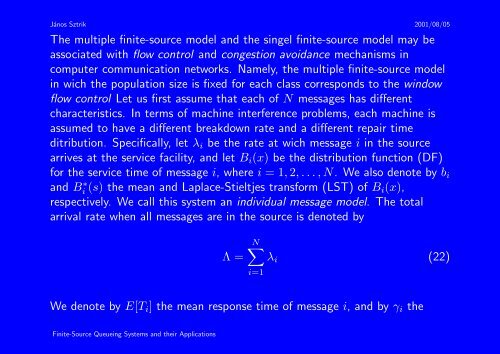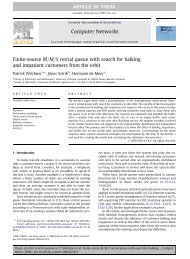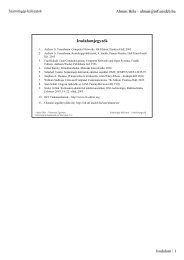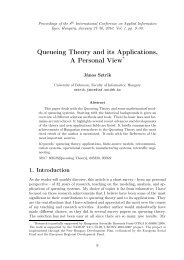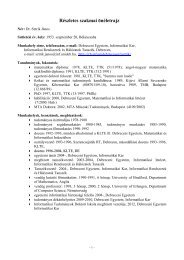Finite-Source Queueing Systems and their Applications
Finite-Source Queueing Systems and their Applications
Finite-Source Queueing Systems and their Applications
Create successful ePaper yourself
Turn your PDF publications into a flip-book with our unique Google optimized e-Paper software.
János Sztrik 2001/08/05<br />
The multiple finite-source model <strong>and</strong> the singel finite-source model may be<br />
associated with flow control <strong>and</strong> congestion avoidance mechanisms in<br />
computer communication networks. Namely, the multiple finite-source model<br />
in wich the population size is fixed for each class corresponds to the window<br />
flow control Let us first assume that each of N messages has different<br />
characteristics. In terms of machine interference problems, each machine is<br />
assumed to have a different breakdown rate <strong>and</strong> a different repair time<br />
ditribution. Specifically, let λi be the rate at wich message i in the source<br />
arrives at the service facility, <strong>and</strong> let Bi(x) be the distribution function (DF)<br />
for the service time of message i, where i = 1, 2, . . . , N. We also denote by bi<br />
<strong>and</strong> B ∗ i<br />
(s) the mean <strong>and</strong> Laplace-Stieltjes transform (LST) of Bi(x),<br />
respectively. We call this system an individual message model. The total<br />
arrival rate when all messages are in the source is denoted by<br />
Λ =<br />
We denote by E[Ti] the mean response time of message i, <strong>and</strong> by γi the<br />
<strong>Finite</strong>-<strong>Source</strong> <strong>Queueing</strong> <strong>Systems</strong> <strong>and</strong> <strong>their</strong> <strong>Applications</strong><br />
N�<br />
i=1<br />
λi<br />
(22)


